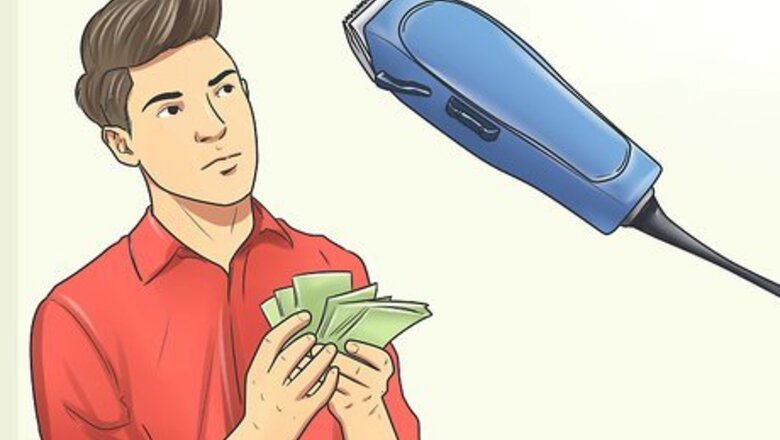
views
X
Research source
Although taking your dog to the groomer is an option, learning how to groom him on your own is a good skill to have as a dog owner.
Gathering Grooming Supplies
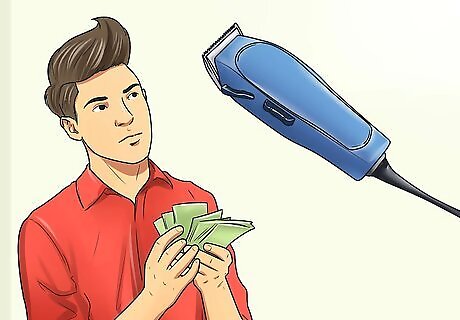
Purchase high-quality grooming instruments. A Cocker Spaniel’s coat can be difficult to groom because of the abundance of hair and how easily the hair can get matted (clumped) and tangled. Purchasing high-quality instruments will help you achieve the look that you want for your dog’s coat and minimize the chances of injury to your dog’s skin due to poor-quality tools. These tools can be purchased at your local pet store. A large pin brush will be needed to give your dog a good overall brushing. A matting comb will help you comb out any matted hair. Wide-toothed combs could also be used for this. Clippers and blades will be needed for shaving the hair. You will need three different blades: 10 blade, 15 blade, and 3 ¾ blade. Grooming scissors and thinning shears will be needed for some of the more detailed trimming of the hair. Scissors are typically used on the feet and the feathering on the back legs. Thinning shears help you blend uneven hair around the shoulders, back leg feathering and chest. If you are unsure of what specific scissors and shears to purchase, consult a groomer or go to your local pet store.
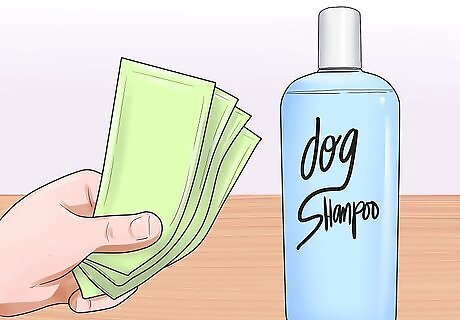
Purchase shampoo and conditioner. Just like choosing grooming tools, high-quality shampoo and conditioner will help you keep your dog’s skin and coat clean and healthy. There are many types of shampoos and conditioners to choose from, some of which are specific for certain skin conditions. If you are unsure of what type to purchase, talk with your veterinarian to see what would work best for your dog. Finding the right shampoo and conditioner is likely going to be a trial and error process. Cocker Spaniels are prone to a skin disease called seborrhea, which causes their coats to become greasy and flaky. If your dog has seborrhea, your veterinarian can help you determine what specific shampoo and conditioner would work best for this skin condition. Make sure you use a shampoo and conditioner that's meant for dogs specifically.
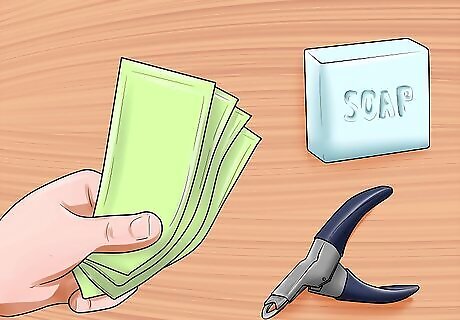
Purchase other grooming necessities. In addition to caring for your Cocker Spaniel's coat and skin, you will need to clean his ears and eyes, trim his nails, and brush his teeth on a regular basis. You can purchase these products at your local pet store, pharmacy, or veterinarian's office. To clean his ears, you will need an ear cleaning solution that removes wax buildup in the ears. Your veterinarian can recommend which solution to use. For cleaning his eyes, you will need to use a dog-safe soap. Talk with your veterinarian before going to the pet store to purchase the soap. Guillotine-style nail clippers are preferable for trimming a dog's nails. Unlike regular human clippers, guillotine-style clippers do not squeeze the nail before cutting it, making the nail-trimming process less painful for your dog. In addition to clippers, you will need either styptic powder or baking soda in case a nail starts to bleed after your trim it. To brush your dog's teeth, you will need dog-specific toothpaste and a toothbrush. Your veterinarian can recommend which toothpaste and toothbrush to use.
Grooming Your Cocker Spaniel’s Coat
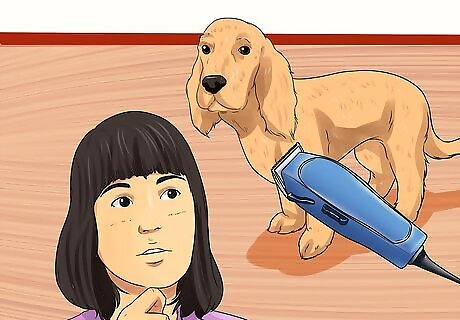
Choose how you want to groom your dog’s hair. Many owners of Cocker Spaniels choose the ‘puppy cut,’ which keeps the dog’s hair short all over. Even though the hair is shorter, this cut still requires regular grooming (about every two weeks). The puppy cut is for Cocker Spaniels that are not being shown in dog shows. If your Cocker Spaniel is a show dog, consider having your dog professionally groomed. Although you could learn how to do this level of grooming on your own, it is probably worth the investment to have your dog groomed by a groomer who is well versed in American Kennel Club grooming guidelines.
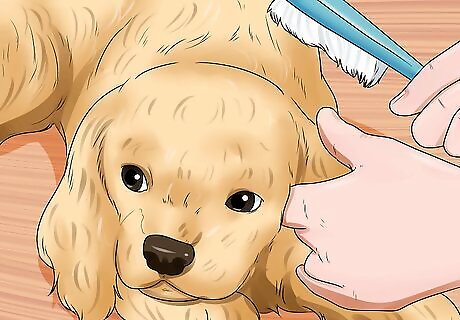
Comb and brush your dog’s hair. Use your pin brush and matting or wide-toothed comb to do this. Giving your dog a good overall combing and brushing will get rid of the hair shed and matted fur before bathing. Remember that Cocker Spaniels have two layers of hair (under and outer coat), so make sure that you comb and brush through both coats. Dog owners often make the mistake of only combing the outer layer of hair, which leaves the under coat more prone to getting dirty and matted. Begin at your dog’s neck and brush back to your dog’s tail and down his legs in the direction of hair growth. Because Cocker Spaniels have a lot of hair, it may be helpful to section the hair and work section by section. Use your comb for detangling, if necessary. You may need to use scissors to cut out the matted hair if it is too tangled to comb and brush through. If you have to use the scissors, take care not to make the section where you cut uneven with the rest of the coat. When you brush your dog’s head and ears, use a soft-bristled brush. Be sure to brush your cocker spaniel at least once per day.
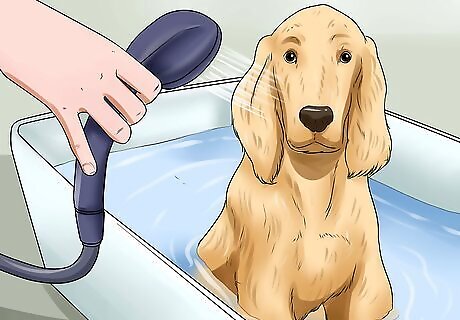
Bathe your dog. Cocker Spaniels typically like being bathed, so this will probably be enjoyable for the both of you. If your dog has a skin condition that makes his skin more sensitive, make sure not to scrub the hair and skin too vigorously. It would be good to bathe your dog about every three months. Do not bathe him too frequently, since frequent bathing could strip out the essential oils that keep his skin and hair healthy. Using warm water will feel good on your dog’s skin. Dry off your dog with a professional blow dryer. You can ask a groomer for recommendations on what type of blow dryer to use.
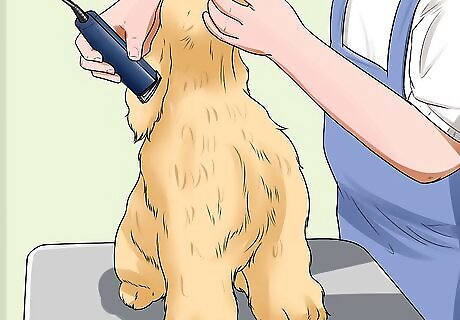
Shave your dog’s face, head and neck. Attach a 10 or 15 blade to your clippers. Holding your dog’s muzzle, start below your dog’s bottom eyelid and carefully shave down to his nose against the direction of hair growth. Hold the skin taut to remove any skin folds that may cause you to nick his skin by accident. Pull and hold his ear back. Since Cocker Spaniels have such large and floppy ears, you can simply flop his ear back and hold it on the top of his head. Starting near the opening of his ear, shave forward all the way down to his lips, being careful not to nick the skin. Lift the floppy part on both sides of his upper lip and shave the hair under his upper lip. The hair in this area can become moist and dirty with mucous, so it’s important to keep that hair short and clean. Carefully shave against the direction of hair growth around your dog’s eyes, being careful not to shave off his eyebrows. Angle his head upward and shave his neck, going upward from his sternum (breastbone) all the way up to his chin. The skin in this area is very sensitive, so be extra careful not to nick the skin; holding the skin taut will help prevent nicks. Shave around the top of your dog’s head (the crown). You may want to switch to a 3 ¾ blade for a closer trim. After you have shaved this area, comb any remaining hair forward and use your scissors and thinning shears to trim the hair that is closer to your dog’s eyes. As you are clipping, don’t forget regularly check to blade to see if it is hot. If the blade is hot, let it cool down before resuming clipping; the heat could damage your dog’s skin.
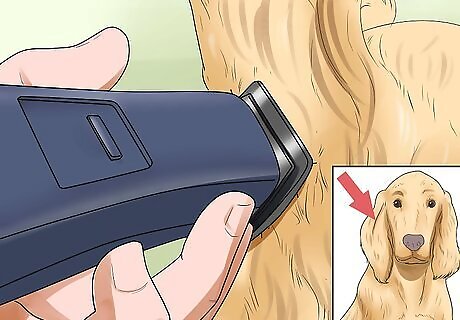
Shave your dog’s ears. To shave his ears, flip his ears back down and shave only the top portion of his ears; do not shave the entire length of his ears. Make sure to shave in the direction of the hair growth. Use a 10 blade or 15 blade to shave his ears. To stabilize the ear while you are shaving it, hold the underside of the ear with your opposite hand and bend the ear over that hand.
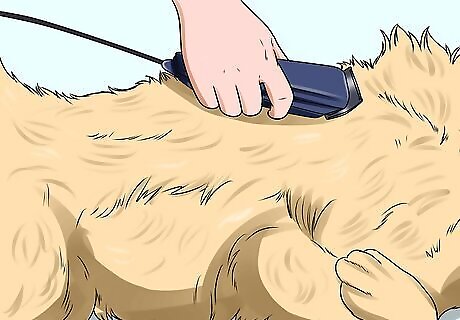
Shave your dog’s back, belly, and tail. To do this, switch to a 7 blade and first shave from the back of your dog’s head to the tip of his tail. Shave in the direction of hair growth, and follow the natural wave of the hair and the curve of your dog’s back. When you shave your dog’s tail, continue to use the 7 blade and shave down in the direction of hair growth. After shaving, comb his tail and see if there are any areas that need to be trimmed with more detail using your scissors.
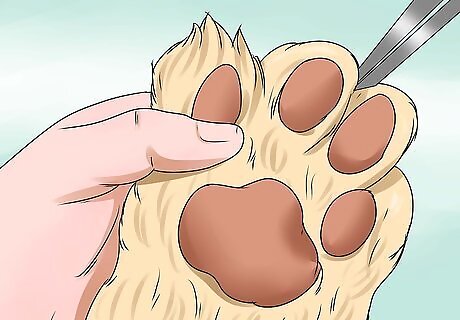
Trim the hair on your dog’s feet. Do not use the clippers on your dog’s feet. To trim the hair, hold your dog’s paw in one hand and comb the hair down in the direction of hair growth. Turn the paw over so that the pad is facing upward. Using your pair of scissors, gently clip the hair down to the top of the toenails. Work your way around the pad in a circular fashion, making sure not to accidentally clip the paw pad with your scissors. Then, turn the paw back over, comb the hair again, and clip more as needed to create a bevel shape with the hair. When you have finished trimming the hair, the hair should still cover the toenails.
Grooming Other Parts of Your Cocker Spaniel
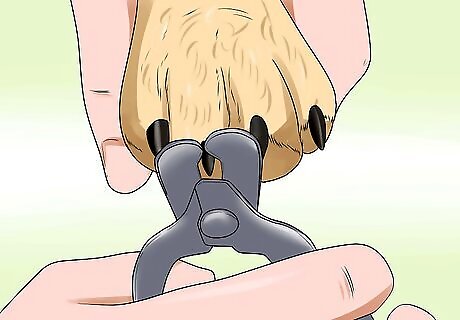
Trim your dog’s nails. Regularly trimming your dog’s nails is an important aspect of grooming. Clip the nail in small increments until you see the quick, which is the blood vessel that runs through the nail. The quick will be easier to see with lighter nails. If your dog has dark nails, use more caution when you are clipping the nails. If the nail starts to bleed, dab a small amount of styptic powder or baking soda on the nail. The bleeding will stop immediately. It is recommended to trim your dog’s nails about every two to three weeks. If you are uncomfortable with your dog's nails, your veterinarian or veterinary technician can do so.
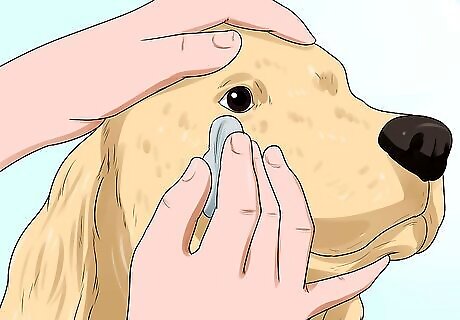
Clean around your dog’s eyes. If you see a lot of buildup around your dog’s eyes, it will be necessary to clean and remove that buildup. When you clean the eyes, put a small amount of soap and warm water on a towel and gently dab around the eyes.
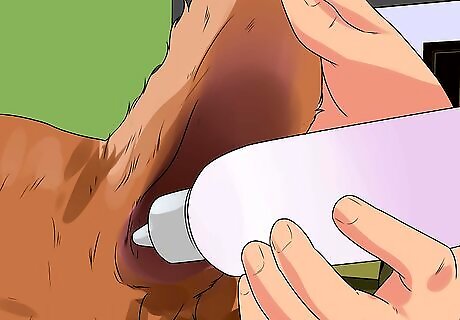
Clean your dog’s ears. Cocker Spaniels are very prone to getting ear infections and have a lot of wax buildup in their ears. Ideally, you should clean his ears on a weekly basis. Consult with your veterinarian so that you know the proper technique for regularly cleaning your dog’s ears at home. If the ears have a foul odor, an ear infection is likely. Your veterinarian will be able to determine the cause of the infection (eg, bacteria) and prescribe an ear drop solution that you can administer at home. If you see a lot of wax, you will need use an ear cleaning solution to remove the wax. There are over-the-counter ear cleaning products that you can purchase at your local pet store. Read and understand the directions carefully before cleaning your dog's ears on your own. In more serious cases of ear infection and wax buildup, your veterinarian can flush out your dog’s ears. Be sure to check your dog's ears frequently.
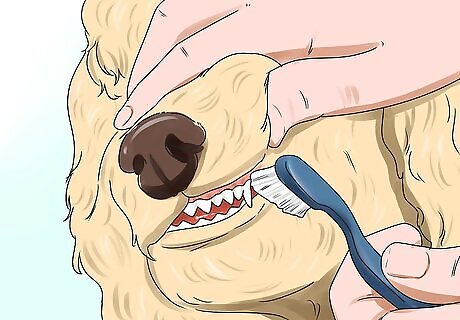
Brush your dog’s teeth. To keep your dog’s teeth nice and clean, it is recommended to brush your dog’s teeth every other day. Your dog probably won’t be immediately comfortable with you brushing his teeth, so you can start with rubbing your finger along his teeth with something that he likes, such as peanut butter. Gradually introduce him to the toothbrush and toothpaste. Be gentle when you brush his teeth, and do it in short intervals (about 5 minutes). If you are having trouble with brushing your dog’s teeth, your veterinarian can teach you the proper technique.



















Comments
0 comment